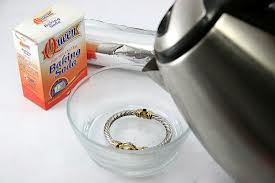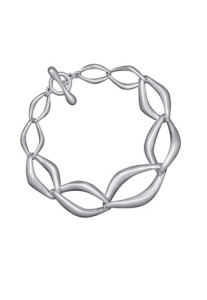The Oxidation Process in Sterling Silver
The Oxidation Process in Sterling Silver
The Oxidation Process in Sterling Silver is easy to solve. Over the years, we’ve been asked many times “will my sterling silver jewellery tarnish?”. In short, yes. The good news is that you can prevent the tarnishing from occurring, remove it if it does occur and that the tarnishing, or oxidation process, in no way indicates poor quality jewellery.
How to keep your sterling silver jewellery from turning dark
The misconception that jewellery that tarnishes is of lower quality, we think, stems from confusion between silver plated jewellery and sterling silver jewellery. Silver plated jewellery is jewellery that has been coated, or plated over with silver. This coating, depending on how thick it was originally applied, will eventually rub off revealing a different colour of metal underneath. Sterling silver on the other hand is not a surface treatment of another metal. Sterling silver is a precious metal and a label of purity. The term sterling silver means that the metal is 92.5% pure silver. There are rules that govern jewellers (Precious Metals Marking Act) and serve to protect consumers.
Sterling Silver Oxidization and Tarnishing
 So, let’s start with preventing the tarnishing process. Because jewellery tarnishes, or oxidizes, when it is exposed to oxygen it may seem impossible to prevent this process from occurring but it isn’t. The impurities in the air around us attach to the surface of the metal, slowly turning it a duller and darker colour. While we wear our jewellery it is constantly being touched and rubbed which actually serves to inhibit the impurities from attaching themselves to the metal surface in the first place. It is when we leave our jewellery unworn for extended periods of time that it tarnishes more quickly and heavily. The simple act of placing your jewellery into an airtight plastic bag will prevent the oxidation process from occurring and your jewellery will look as beautiful as it did the first day you purchased it.
So, let’s start with preventing the tarnishing process. Because jewellery tarnishes, or oxidizes, when it is exposed to oxygen it may seem impossible to prevent this process from occurring but it isn’t. The impurities in the air around us attach to the surface of the metal, slowly turning it a duller and darker colour. While we wear our jewellery it is constantly being touched and rubbed which actually serves to inhibit the impurities from attaching themselves to the metal surface in the first place. It is when we leave our jewellery unworn for extended periods of time that it tarnishes more quickly and heavily. The simple act of placing your jewellery into an airtight plastic bag will prevent the oxidation process from occurring and your jewellery will look as beautiful as it did the first day you purchased it.
Jewelry and Tarnishing
On occasion, we have had customers explain to us that their jewellery has turned black where it touches their skin and they fear they have been sold poor quality jewellery. The sterling silver jewellery that turns black on your skin has nothing to do with the purity of the metal but everything to do with the chemicals of your skin interacting with the sterling silver. Our body chemistry can change from season to season, and even day to day depending on our diet. We do tend to see this blackening, particularly on the underside of a necklace, more during the hot and humid summer months when people tend to perspire heavily. The sweat interacts with the metal, turning the metal black. This is not a permanent colour change and the jewellery simply requires a good cleaning. Not all people have this effect on sterling silver but for those that do, take heart that it can be avoided by simply not wearing your jewellery on particularly hot days or taking your jewellery off before you slip your running shoes on.
Stopping Oxidation Process Using Rhodium Plate
There are lines of jewellery on the market that use rhodium to plate the sterling silver which stops the oxidation process in its tracks. This rhodium plating in no way affects the purity of the sterling silver beneath it but simply applies a layer of rhodium on top of the precious metal. This layer of rhodium stands between your sterling silver and the elements, acting as a physical barrier and thereby eliminating the many and varied ways that your sterling silver may become dirty, or tarnished.
Sterling silver is an easy metal to clean by yourself at home with a common household product. We recommend that you clean your sterling silver jewellery with baking soda and water. Here is the most effective recipe for complete sterling silver cleaning:
Steps To Clean Silver Jewelry
- Place jewelry on a double layer of aluminum foil in a small dish
- Add 3 tablespoons of baking soda
- Pour boiling water onto the jewelry
- Soak for 10 minutes
- Remove and pat dry with paper towel
** note, please do not use this cleaning method on jewellery with heat sensitive stones (like opals) or on organic materials (like pearls). To clean these items, use baking soda and water to create a paste and use your fingers or a soft toothbrush to gently rub the paste around set stone/pearl and rinse with tepid water and pat dry with a soft cloth.
This simple method of cleaning will remove the tarnish and oxidation from your jewellery, and restore it to its original condition. Works like a charm every time! Sterling silver jewellery is easily maintained, especially when you know the facts! When you invest in a piece of well-made sterling silver jewellery, it will last forever. Now you know!
Disclaimer


No comments yet.